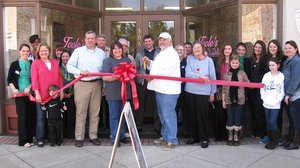Business is booming and you’ve decided that you’re ready to expand. You have your new facility leased or purchased, equipment is installed and all you need is a staff in place to begin operations, but what is the best way to go about staffing a second outlet without too many complications? While there are many theories on this subject, we have a few tips that will help with a smooth transition.
Staffing a Second Restaurant of Food Production Facility
There are three key staffing procedures that we think should be in play before you open a second outlet.
- Management dedicated to the new site
- A quality mix of new and transferred staff members
- Quality training system in place
All too often, we see restaurants expand and expect their chef and front of the house managers take on a bigger role during the transition. We feel that this is a mistake, while it may be beneficial to temporarily transfer management personnel who have tenure with the company and are experienced in the day-to-day operation of the business, there should be a qualified manager on duty at each location.
Current state regulations require that each outlet have a MN certified food manager. There are also certain jurisdictions that may require a qualified manager to be on site during all hours of operation. It may be prudent to check with your local health department in order to ensure that your new facility has the appropriate certified management coverage.
Besides transferring management personnel, moving a few key kitchen, production or service staff members to the new location can give your new facility an edge in experience and open up opportunities to train new staff at your current location. This process also provides an opportunity to evaluate current employees who may deserve promotion.
The third item on our list should be obvious, but many times training is overlooked during expansion. All too often, management and staff are used to business as usual in their current facility and they fail to take the time to set up detailed training procedures at the new location. Having a member of your food management team design a detailed training plan will inevitably lead to success, and incorporating site-specific training procedures should never be left on the back burner.
With a well thought out strategy, you could be looking at even more success in the future. Even the largest chain had to go through the initial growing pains to become what they are today.



